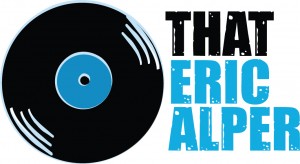Trent Reznor’s The Downward Spiral put Nine Inch Nails as industrial rock’s vanguard, blending raw emotion with cutting-edge production. A conceptual odyssey through self-destruction, the album remains as haunting today as it was 30 years ago. But beneath its nihilistic surface lie secrets even die-hard fans may not know. Here are five deep cuts into the album that changed music forever.
1. The Album Was Recorded in a House Haunted by Infamy
When Reznor sought out a location to record The Downward Spiral, he didn’t just pick any studio—he chose 10050 Cielo Drive, the site of the infamous Manson Family murders. Dubbed “Le Pig” (a reference to the word scrawled in blood on the front door), the house provided an eerie backdrop to the album’s themes of violence and mental collapse. Reznor later met Sharon Tate’s sister, Patti, who asked if he was exploiting the tragedy. That conversation shook him, leading him to reflect: “What if it was my sister?” He moved out soon after, and the house was demolished. The music, however, remains—a ghostly echo of the space where it was created.
2. “Closer” Wasn’t Supposed to Be a Sex Anthem
Closer is often mistaken as the ultimate seduction song, but in reality, the track is anything but sexy. It’s a song about self-loathing, obsession, and power dynamics. Reznor, frustrated that it became a strip club staple, clarified: “It’s super negative and super hateful… I didn’t think it would become a frat-party anthem.” Sonically, the track is built around a heavily modified bass drum sample from Iggy Pop’s “Nightclubbing,” layered with unsettling industrial textures. The disturbing, Mark Romanek-directed video—which includes a crucified monkey and spinning pig’s head—only reinforced the song’s grotesque irony.
3. A Leitmotif Haunts the Entire Album
Hidden within The Downward Spiral is a recurring melodic theme—a haunting motif that appears in different forms throughout the record. First introduced on Piggy as a somber organ line, it resurfaces on Closer (as a piano phrase), the title track (on acoustic guitar), and A Warm Place (in reversed form). This leitmotif threads the album together, reinforcing the protagonist’s inevitable collapse. It’s subtle but deliberate, showing Reznor’s meticulous attention to musical storytelling. In a record built around decay and despair, the repetition of this theme becomes an auditory descent into madness.
4. “Hurt” Almost Didn’t Make the Cut
Now regarded as one of the greatest songs of all time—thanks in part to Johnny Cash’s devastating 2002 cover—Hurt was nearly scrapped. Reznor hesitated to include it, fearing it was too personal, too fragile, too raw. Unlike the rest of the album’s abrasive soundscapes, Hurt is stark and intimate, blending acoustic guitar with industrial noise. The song’s aching vulnerability became a defining moment in Reznor’s career, proving that NIN wasn’t just about aggression—it was about emotion. Cash later transformed it into a song of regret and mortality, leading Reznor to famously say: “That song isn’t mine anymore.”
5. The Album’s Opening Sound Is a Disturbing Sci-Fi Sample
The Downward Spiral opens with Mr. Self Destruct, a brutal onslaught of distortion and noise. But what’s that unsettling sound at the beginning? It’s a sample from George Lucas’ 1971 dystopian film THX 1138, featuring a man being brutally beaten by a robotic police officer. The relentless mechanical violence sets the tone for the album’s themes of dehumanization and submission to power. Reznor frequently wove obscure film samples into the album, including screams from Robot Jox on The Becoming and a disturbing snippet from The Texas Chain Saw Massacre buried in Reptile. These sonic Easter eggs make The Downward Spiral even more unnerving on repeat listens.
From its infamous recording location to its hidden musical motifs, The Downward Spiral is an intricate tapestry of pain, control, and self-destruction. Reznor crafted a work that blurred the lines between music, film, and psychological horror, creating a landmark that still kicks you in the head and stomach 30 years later. Whether you’re rediscovering it or hearing it for the first time, just remember—this is not an album you listen to. It’s an album you survive.







